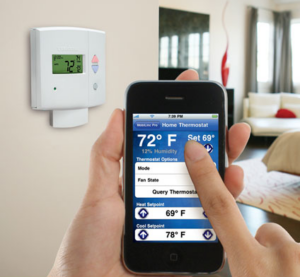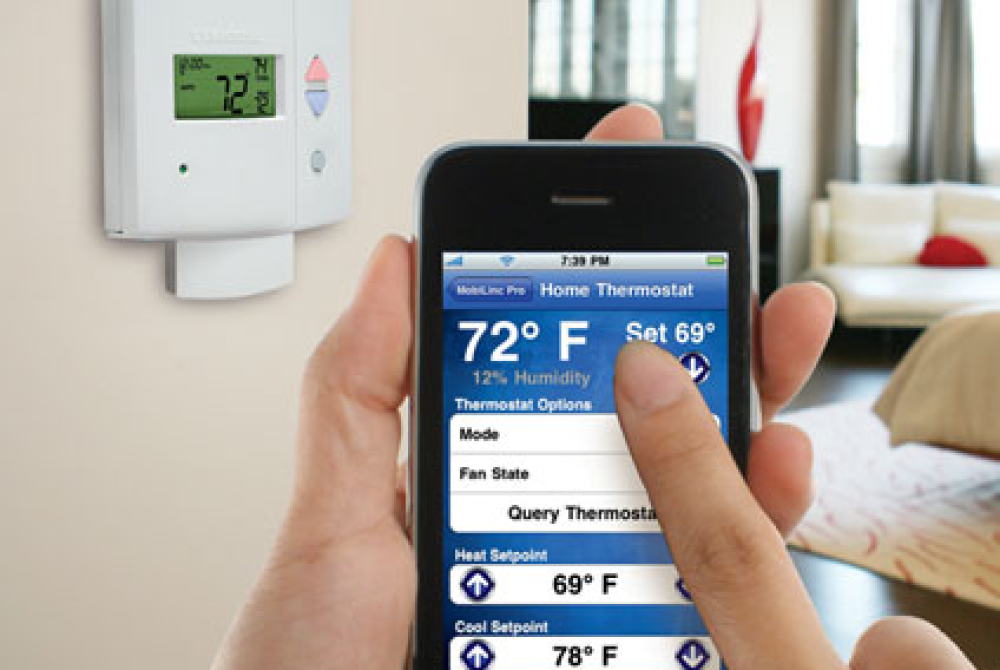Already an indispensable aspect of many people’s lives, smartphones now hold the promise of helping to cut in-home energy consumption and costs. Consumers are well aware that mobile technology allows them to pay bills online, watch movies, check in at the airport and, of course, play “Angry Birds.” So why not also use a smartphone to remotely control appliances and adjust the thermostat at home? Used in conjunction with an eco-friendly home, mobile devices can go a long way toward residential energy efficiency.
Mobile trends indicate a turn toward green sustainability. For example, the national Green Button program is a public-private partnership that aims to give electricity customers direct access to usage data from their utility companies. The partners say the program allows consumers to better monitor their green efforts and encourages entrepreneurs to develop innovative eco-friendly technology.

To further the Green Button initiative, the U.S. Department of Energy awarded cash prizes in May and June 2012 as part of its Apps for Energycompetition. The contest recognizes software developers who create apps to help consumers make use of Green Button data. The grand prize for Best Overall Application went to Leafully, which seeks to educate consumers on the economic and environmental impact of their energy usage.
There are a growing number of eco-related apps and other mobile products available for consumers seeking to shrink their carbon footprint.
● Smart Thermostats: Today’s thermostats aren’t just programmable, they are also teachable. By detecting motion, they can adapt to a household’s comings and goings while gathering data such as humidity and ambient light levels to find the most energy-efficient way to keep a house at its optimal temperature. Nest and ecobee are among the smart thermostat makers that offer apps for controlling home temperatures remotely.
● Controlling Appliances: General Electric’s Nucleus energy manager works in conjunction with a smart meter to provide homeowners with information on electricity consumption and costs. With the Control4 home control system, users can remotely synchronize control of appliances and other electronic devices, from window shades to a coffeemaker and a sound system.
● Empowering Power Strips: Homeowners have numerous options for managing energy use through smart power strips. Products such as the UFO Power Center and the EnergyHub strip allow homeowners to track the energy use of appliances and program and control them remotely, including via smartphones and other mobile devices.
● Energy Efficient Lighting: Even in the most energy-efficient of homes, light bulbs will burn out. Light Bulb Finder allows customers to locate the right bulb to match their preferences and light fixtures. The app also will place orders with the cheapest vendor and calculate how long it will take for the bulb to pay for itself in electricity savings.
● Social Energy App: Facebook and the Natural Resources Defense Council have teamed with Opower to offer an app that allows users to compare their energy usage against that of similar homes and that of their friends. They also can share tips for cutting costs and compete to achieve energy-saving goals.
- Also imagine a Green Home Remodeling app that allows you to check off measures to green your home beyond energy efficiency, gain points, compete with your friends and certify under a Green Rating system. Contact for more details (Info@allianceES.org)
Whether consumers are motivated to “go green” by money, conscience or peer pressure – or some combination of those factors – smartphones can work in tandem with sustainable home designs to help them conserve energy and cut costs.
BIO
This guest post was provided by Dean Vella who writes about supply chain management and sustainability training for University Alliance, a division of Bisk Education Inc.





